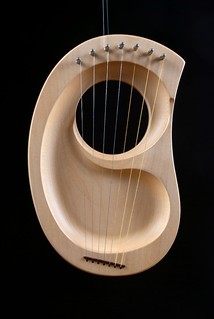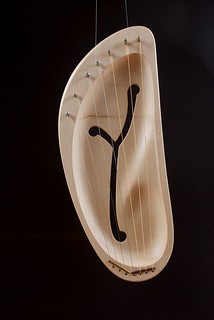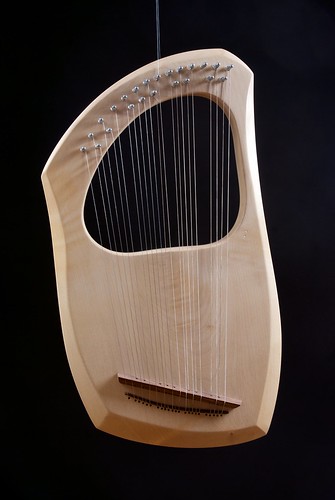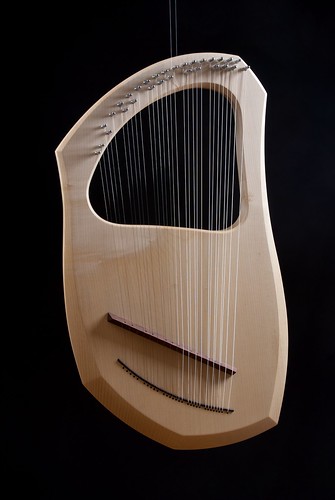
|

|

|
| Auris Lyre LBP | Auris Lyre LOP | Auris Lyre LNP |

|

|

|
| Auris Lyre LGP | Auris Lyre LDD | Auris Lyre LDP |

|

|
| Auris Lyre LTS |
Auris Lyre LSK |
THE LYRE
THE LYRE – with its quiet and bright sound it stimulates listening in a unique way and so creates the necessary conditions for the child to meet and conquer music.
This instrument is meant to be a powerful tool, with which, through games, playing together and listening, the child can learn music in its fullest meaning.
The aim has been to create a lyre with a clear and light-filled sound, carried by the material's own tone quality. To achieve this, the strings are brought into balance with the static resistance of the shaped wood, which is needed so that the whole body of the lyre will be penetrated and resound with the tone's movement. This living process reveals the inherent sonorous quality of the wood and creates the ”voice” of the instrument.
The lyre tone is so fine and mild that it in a unique way awakens the listening. It never overwhelm the listener, it will open the ears and inspire the lust to follow the tone fleeing into the periphery “pulling” the activity of listening along.
If you play lyre for a class of vivid children that you want to pull together and bring into focus, you can play a piece on the lyre and they will become still and listening.
Smooth lyre music for small children at bed time will help to relax and sleep well.
It has a given role in music therapy, opening up the mind letting out tensions and creating healing powers.
Very useful by music making for un-borne or pre-maturely borne children (especially the LBP model)
For people at the final state of life the lyre sound will bring comfort and ease.
The Auris lyres are made out of maple wood they are treated with shellac and polished with wax.
They have specially designed strings to meet the highest demand of performance. Maintenance of the Auris lyres
The first tuning
In order for the lyre to hold its pitch as long as possible after tuning, it is important that the very first tuning is done correctly:
First tune all of the strings to their right pitch. Then press down relatively hard with your finger in the middle of each string. It should flex 1/4 inch (7-8mm). The tones will now have become lower because the strings stretch and the lyre body bends slightly under the string tension. Now, repeat the procedure until the strings withstands the pressure of your finger without losing their pitch. Please note: Never turn the tuning key without listening to the string at the same time!
This process is also used when you change an old string to a new.
Playing the Lyre:
7- and 12-stringed lyres are held in the left hand and played with the right. The bigger lyres are held like harps on the knee and played with both hands.
Changing the strings
The strings are changed either when they no longer hold a clear tone or when they have broken. When you change a broken string you must not forget to unscrew the tuning pin as many turns as it has been tightened. This will be about three or three and a half turns. The tuning pins have left hand threads which means that they screw out clockwise, and in counter-clockwise. When the new string is placed on the lyre, it is attached to the pin as shown in picture A and wound up as in picture B.
The wood
The wooden part has a shellac priming and is finished with a polish. This gives a soft very “woody” feeling and is easy to protect and preserve. If there are no marks or stains on the wooden body and you just want to shine it up a little, rub it with some beeswax or wood polish on a rough cloth – let this dry and polish with a smooth cloth.
A notch in the wood can be levelled out by wetting it and as it is still wet, work it over with a hot iron, this will make the wood swell up and the notch will become less deep, if it does not level out completely you can repeat the process a couple of times and it will become less deep every time. Even if it causes a shallow burn mark in the wood surface it this will not jeopardize the quality of the instrument. A superficial burn mark like this is very easy to rub of with a grinding paper. Finish with a fine gritted sand paper and follow the waxing procedures as described above.
Marks and stains from wax crayons can be resolved by turpentine.
We wish you many joy full moments with your instrument